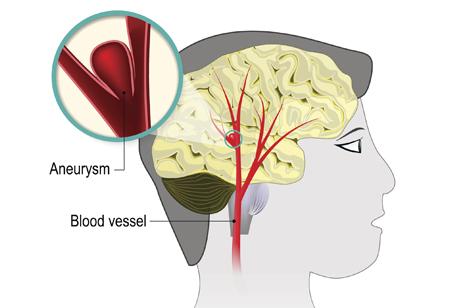Cerebral aneurysms have been in the news. And while Emilia Clarke's story may seem straight out of a "Game of Thrones" episode, it highlights the growing incidence of this life-threatening condition.
5% of the population — or 15 million people — will develop an aneurysm. Most of these aneurysms do not show symptoms and are not dangerous. But about 30,000 aneurysms rupture each year, resulting in some pretty grim statistics: About half of the time, they result in death, and another 20% will result in a major stroke. While those numbers may seem startling, it's important to note that medical science has come a long way when it comes to identifying and treating aneurysms.
Aneurysm risk factors
Risk factors include high blood pressure, smoking, family history and, unfortunately, being female.
"There are a few things you can control — don't smoke and control your blood pressure," Dr. Wanebo said. "And if you have a family history, it's a good idea to have a screening test, either an MRA or CTA, which will look at your arteries." An MRA — magnetic resonance angiography — is a type of MRI that provides images of blood vessels. A CTA is a test where dye is injected intravenously to produce images of blood vessels.
Treatment recommendations for cerebral aneurysms depend on the size, shape and location of the aneurysm. If it's less than 5 mm, your neurosurgeon would typically recommend a "watch and wait" approach.
If the aneurysm is greater than 5 mm, or if watching and waiting seems too stressful, options would include procedures called coiling or clipping:
- Coiling is an endovascular procedure, so it's less invasive. A catheter is passed through the groin up to the artery "housing" the aneurysm. The procedure needs to be repeated about 20% of the time.
- Clipping involves open brain surgery but is successful 99% of the time.
"When observing aneurysms with serial imaging scans, we look for growth — or not — for at least five years to ensure that a small aneurysm is stable," Dr. Wanebo said. "People should understand that we can treat aneurysms a lot more successfully than we could 30 years ago, and the complication rate is much lower."
